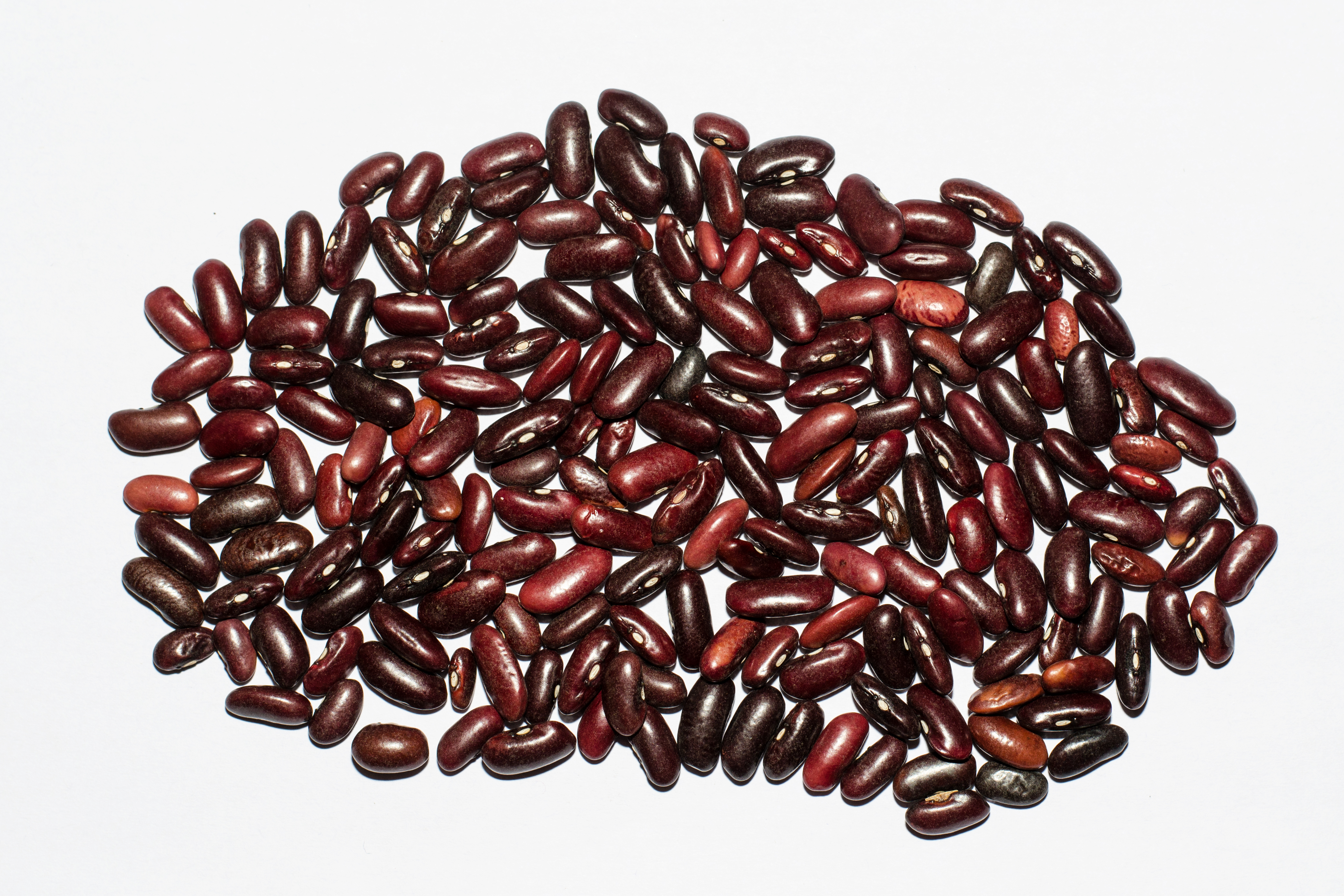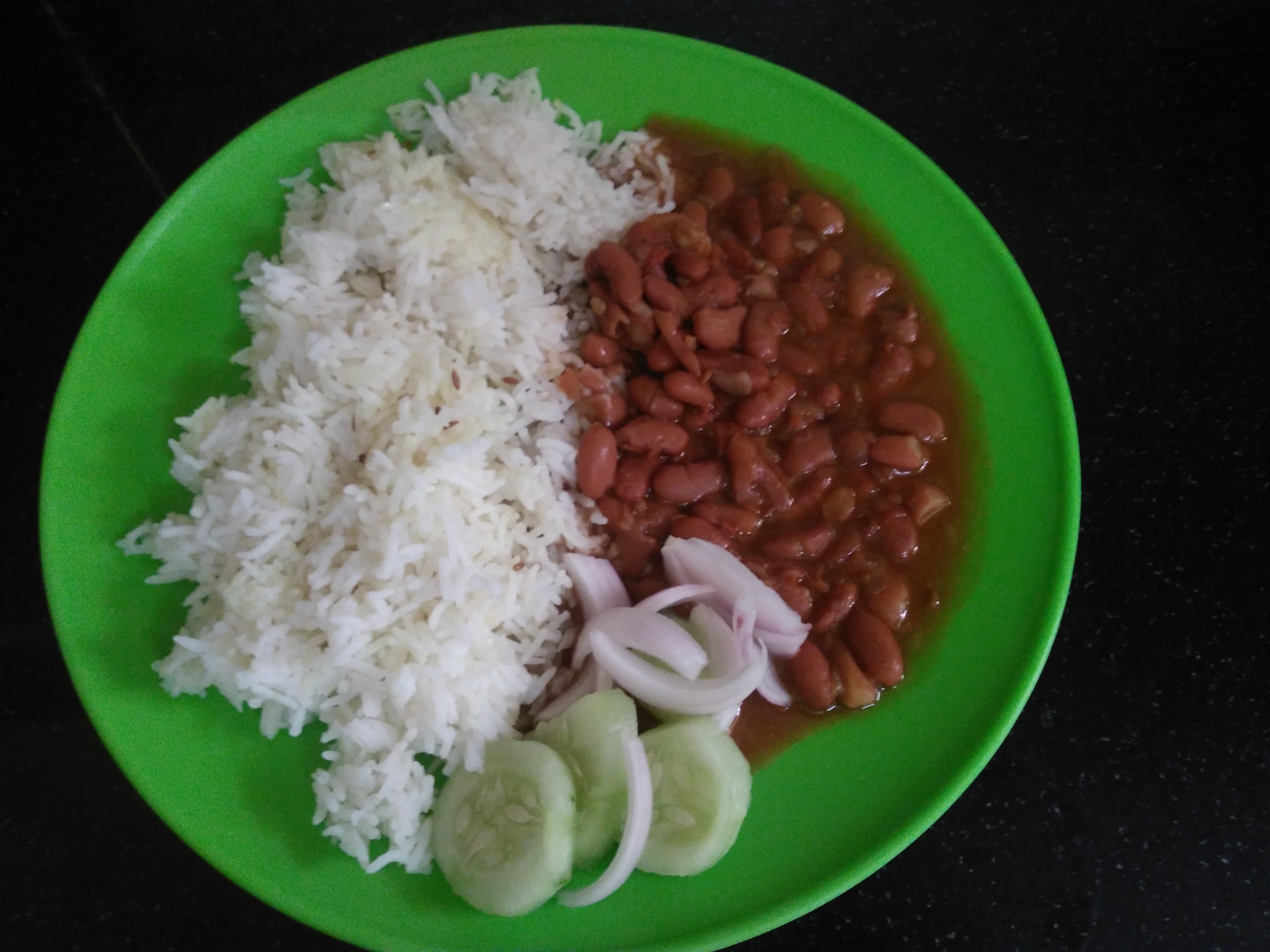Small Red Bean on:
[Wikipedia]
[Google]
[Amazon]
 The kidney bean is a variety of the common
The kidney bean is a variety of the common
 Red kidney beans are commonly used in chili con carne and are used in the cuisine of India, where the beans are known as '' rajma''. Red kidney beans are used in southern Louisiana for the classic Monday Creole dish of red beans and rice. The smaller, darker red beans are also used, particularly in Louisiana families with a recent Caribbean heritage. Small kidney beans used in La Rioja, Spain, are called '' caparrones''. In the Netherlands and Indonesia, kidney beans are usually served as soup called '' brenebon''. In the Levant, a common dish consisting of kidney bean stew usually served with rice is known as ''fasoulia.'' To make bean paste, kidney beans are generally prepared from dried beans and boiling until they are soft, at which point the dark red beans are pulverized into a dry paste.
Red kidney beans are commonly used in chili con carne and are used in the cuisine of India, where the beans are known as '' rajma''. Red kidney beans are used in southern Louisiana for the classic Monday Creole dish of red beans and rice. The smaller, darker red beans are also used, particularly in Louisiana families with a recent Caribbean heritage. Small kidney beans used in La Rioja, Spain, are called '' caparrones''. In the Netherlands and Indonesia, kidney beans are usually served as soup called '' brenebon''. In the Levant, a common dish consisting of kidney bean stew usually served with rice is known as ''fasoulia.'' To make bean paste, kidney beans are generally prepared from dried beans and boiling until they are soft, at which point the dark red beans are pulverized into a dry paste.
 The kidney bean is a variety of the common
The kidney bean is a variety of the common bean
A bean is the seed of several plants in the family Fabaceae, which are used as vegetables for human or animal food. They can be cooked in many different ways, including boiling, frying, and baking, and are used in many traditional dishes th ...
(''Phaseolus vulgaris
''Phaseolus vulgaris'', the common bean, is a herbaceous annual plant grown worldwide for its edible dry seeds or green, unripe pods. Its leaf is also occasionally used as a vegetable and the straw as fodder. Its botanical classification, alo ...
''). It resembles a human kidney and thus is named after such. Red kidney beans should not be confused with other red beans, such as adzuki bean
''Vigna angularis'', also known as the adzuki bean , azuki bean, aduki bean, red bean, or red mung bean, is an Annual plant, annual vine widely cultivated throughout East Asia for its small (approximately long) bean. The cultivars most familiar ...
s.
Classification
There are different classifications of kidney beans, such as: *Red kidney bean (also known as: common kidney bean, rajma in India, surkh (red) lobia in Pakistan). *Light speckled kidney bean (and long shape light speckled kidney bean). *Red speckled kidney bean (and long shape light speckled kidney bean). *White kidney bean (also known as cannellini in Italy, lobia in India, or safaid (white) lobia in Pakistan).Nutrition
Kidney beans, cooked by boiling, are 67% water, 23% carbohydrates, 9% protein, and contain negligible fat (table). In a 100-gram reference amount, cooked kidney beans provide of food energy, and are a rich source (20% or more of the Daily Value, DV) of protein, folate (33% DV), iron (22% DV), and phosphorus (20% DV), with moderate amounts (10–19% DV) of thiamine, copper, magnesium, and zinc (11–14% DV).Dishes
 Red kidney beans are commonly used in chili con carne and are used in the cuisine of India, where the beans are known as '' rajma''. Red kidney beans are used in southern Louisiana for the classic Monday Creole dish of red beans and rice. The smaller, darker red beans are also used, particularly in Louisiana families with a recent Caribbean heritage. Small kidney beans used in La Rioja, Spain, are called '' caparrones''. In the Netherlands and Indonesia, kidney beans are usually served as soup called '' brenebon''. In the Levant, a common dish consisting of kidney bean stew usually served with rice is known as ''fasoulia.'' To make bean paste, kidney beans are generally prepared from dried beans and boiling until they are soft, at which point the dark red beans are pulverized into a dry paste.
Red kidney beans are commonly used in chili con carne and are used in the cuisine of India, where the beans are known as '' rajma''. Red kidney beans are used in southern Louisiana for the classic Monday Creole dish of red beans and rice. The smaller, darker red beans are also used, particularly in Louisiana families with a recent Caribbean heritage. Small kidney beans used in La Rioja, Spain, are called '' caparrones''. In the Netherlands and Indonesia, kidney beans are usually served as soup called '' brenebon''. In the Levant, a common dish consisting of kidney bean stew usually served with rice is known as ''fasoulia.'' To make bean paste, kidney beans are generally prepared from dried beans and boiling until they are soft, at which point the dark red beans are pulverized into a dry paste.
Toxicity
Red kidney beans contain relatively high amounts of phytohemagglutinin, and thus are more toxic than most other bean varieties if not pre-soaked and subsequently heated to the boiling point for at least 10 minutes. The US Food and Drug Administration recommends boiling for 30 minutes to ensure they reach a sufficient temperature long enough to completely destroy the toxin. Cooking at the lower temperature of , such as in a slow cooker, can increase this danger and raise the toxin concentration up to fivefold. Canned red kidney beans, though, are safe to eat straight from the can, as they are cooked prior to being shipped. As few as five raw beans or a single undercooked kidney bean can cause severe nausea, diarrhea, vomiting, and abdominal pains.References
{{reflist Phaseolus Edible legumes